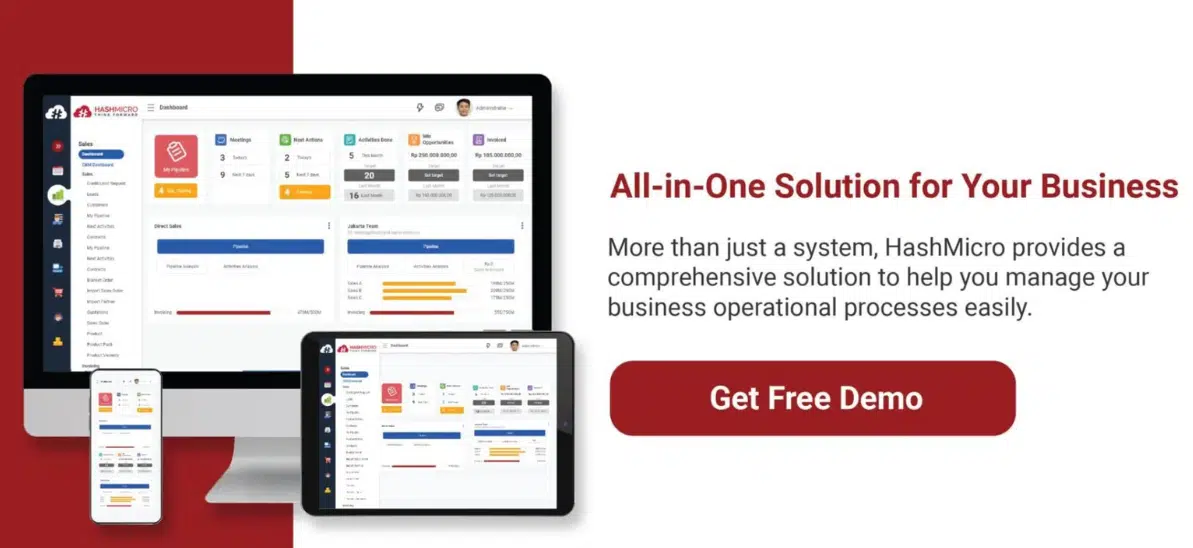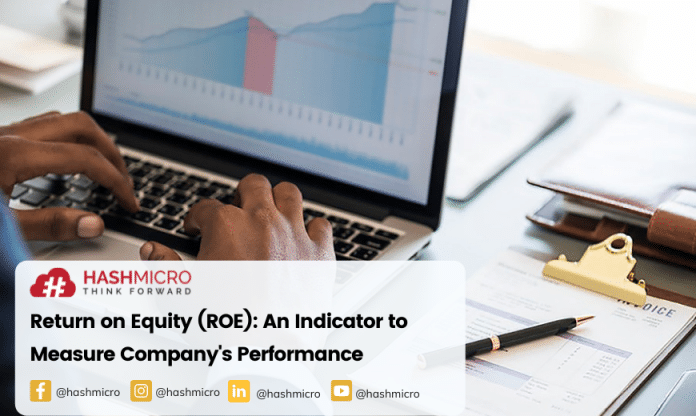There are some important terms that you should immediately understand and learn if you are new to or looking to enter the business and finance field. Return on equity, or ROE, is one of them. This ratio or matrix is often referred to as return on equity, and can be used to assess company performance. As a result, this matrix is often used as a reference in analyzing the financial success of a company. You can use a financial management system to optimize the company’s financial management and meet client needs to the fullest.
The higher a company’s ROE value, the more likely investors will invest in it. As a result, businesses should be able to choose the best approach to raise their ROE. Leveraging the best ERP software can support this goal by providing accurate financial insights, streamlining operations, and improving resource management. This post will go through the definition, components, methods, and how to calculate return on equity.

Table of Contents
- Understanding Return on Equity (ROE)
- Factors Affecting Return on Equity (ROE)
- How to Calculate ROE
- Benefits of ROE Analysis for Companies and Investors
- The Difference between ROE and ROA
- Conclusion
Understanding Return on Equity (ROE)

Return on equity (ROE) is a metric that tells investors how well the business (or, more accurately, its management team) is managing the money provided by shareholders. In other words, it measures a company’s profitability against the equity of its investors. The greater the ROE, the more effectively the business management generates revenue and growth from its equity funding.
ROE is often used to evaluate a company’s performance against its competitors and the market as a whole. This formula is very advantageous when comparing organizations in the same sector. It provides a reliable indicator of which companies are operating with greater financial efficiency and can be used to evaluate almost any business with a higher proportion of tangible assets than intangible assets.
Factors Affecting Return on Equity (ROE)
ROE considers several factors, including the following:
1. Net Income
Net income is a determining factor for investors when choosing a good company. Profit is determined by the company’s revenue and operating costs. This statistic is often seen on a company’s income statement and is a measure of its profitability. EAT (Earnings After Tax) or profit for that time can also be referred to as net income.
2. Equity
After all liabilities are deducted, equity refers to the owners’ rights to the assets of the company. Equity refers to the number of ownership rights a person has in a business. The annual balance sheet financial statements contain this equity. Money invested, stocks, retained earnings, and dividends are examples of equity.
3. Prive
The results of the calculation of ROE can be influenced by the privy or capital taking of the owner of the company. The statement of changes in capital owned by a corporation will experience changes in the capital account when using private. This has a direct effect on the ROE value.
4. Costs and Expenses
In addition to revenue, costs or expenses have a significant effect on the company’s net income. If a company’s total expenses or expenses exceed its income on the income statement, its net income is a loss rather than a profit. As a result, the amount of expenses and costs will greatly affect the calculation of net income, which will be used as an indication in evaluating a company’s return on equity.
How to Calculate ROE
If net income and equity are both positive numbers, the return on equity (ROE) will be calculated for any company. Net income is determined before dividends to common stockholders and after being distributed to preferred stockholders, and interest to lenders. The formula for calculating ROE is as follows:
- The use of company equity is more efficient in generating income. The calculation of return on equity that is close to number 1 will show the company’s performance is also increasingly effective.
- However, if the return on equity is close to zero, the corporation is still inefficient in managing its profits-generating assets.
Benefits of ROE Analysis for Companies and Investors

Following our discussion of the concept and process of calculating ROE, we will discuss the implications of employing ROE, particularly for businesses and investors. The following is a more detailed discussion of the advantages:
1. Negative net income
Negative shareholders’ net income usually means excessive debt or uneven profitability. Profitable corporations that use cash flow to buy back their stock are outliers to the norm. The buybacks lower equity (equity reduced from buybacks) to the point where the calculation becomes negative.
2. ROE As a comparison tool between companies in similar industrial sectors
In general, ROE is calculated to assess a company’s capital to create net profit after taxes. The organization may also utilize it as management assessment material. As a result, it is possible to determine which division can produce the greatest results in the future.
3. Excess debt
If a business borrows extensively, it can increase ROE because equity equals assets minus debt. The more debt a business has, the lower its equity may decrease. An incident that often occurs when a company incurs a large debt to buy back its shares. This may overestimate earnings per share (EPS) but have no impact on actual performance or growth rates.
4. Determinants of company expansion decisions
In general, if a company’s ROE analysis is considered good or even exceeds the goal, the company’s growth potential will be much greater. Businesses use ROE to determine if growth is feasible.
The Difference between ROE and ROA
Return on equity (ROE) and return on assets (ROA) are two metrics that help in determining the financial health and profitability of a business. Thus, ROA and ROE seem to be synonymous as they both seek to measure how profitable a business is making a profit. However, with enough perseverance, one can discern the differences and get a complete view of the company’s success. The following table summarizes the differences between the two:
- ROA measures net income against the company’s total assets, excluding liabilities. Thus, the calculation of ROA can show the effectiveness of the company in using all assets, including its loans.
- Meanwhile, return on equity measures the company’s net income against its net assets. Because ROE does not include debt in its efficiency assessment, businesses with significant debt will be excluded from this metric.
Many investors use ROA and ROE analysis in determining their decisions when investing. This is done because ROA shows the efficiency of a company in managing all its assets including the use of debt to increase company productivity. Use an asset management software to monitor asset usage, scheduled maintenance, and calculate return on investment (ROI), expenses, and capital asset value automatically.
Conclusion
Return on equity is used to assess the company’s potential in creating profits for its owners. In addition, ROE can be used as a benchmark to determine how productive a business is. Understanding the various financial measures will allow you to make more informed investment choices that will maximize your returns.
For business or company owners, you need to be more careful when calculating to get the highest return on equity possible. To do this, you can use HashMicro’s Accounting System to increase the profitability of your business with the help of automatic and accurate budget calculations. You can start HashMicro’s Accounting Software demo for free now.
Related article:






















































